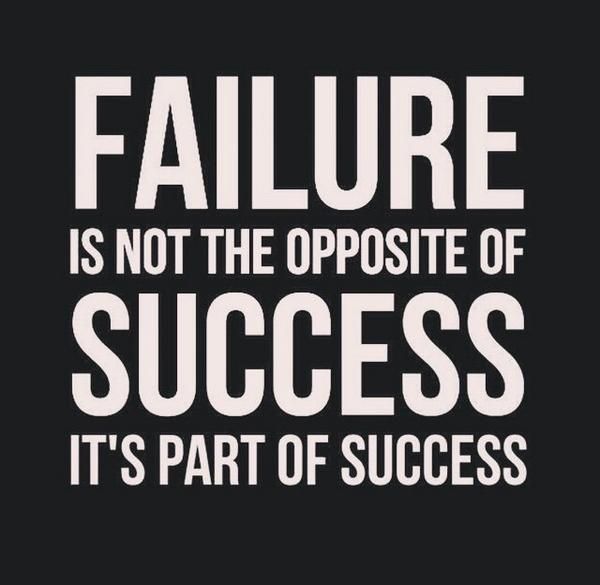
The Cheeky Monkey Media Blog
A few words from the apes, monkeys, and various primates that make up the Cheeky Monkey Super Squad.

How to Create a Marketing Plan that Delivers
 September 27, 2016 / Treena Bjarnason
September 27, 2016 / Treena Bjarnason
My Story: The Plan that Wasn’t
I’m sitting in my sweatpants, my hair’s a mess, and I’m staring at the computer screen. My dog Caesar lays at my feet, as done with the day as I am. It’s 11:00pm, and I’m putting the finishing touches on the marketing strategy I’m presenting tomorrow morning.
Fast forward 3 months. I survived the presentation, but the plan’s execution looked something like this:

I looked something like this:
Now, while I am going to tell you:
-
Why the plan and strategy I put together for our marketing efforts failed to get results I wanted, and
-
How to develop an effective plan and strategy for your marketing team to follow that’s actionable and gets you and your organization results.
We first need to understand:
What is a marketing plan, what does it do?
According to staff at Entrepreneur,
Unlike a business plan, a marketing plan focuses on winning and keeping customers; it’s strategic and includes numbers, facts and objectives. A good marketing plan spells out all the tools and tactics you’ll use to achieve your sales goals. It’s your plan of action—what you’ll sell, who’ll want to buy it and the tactics you’ll use to generate leads that result in sales.
Marci Martin, a contributor at Business Daily news, explains that,
At its most basic, a marketing plan describes who your customers are, where they get information and how you are going to reach them.
Martin goes on to identify the four key components of a marketing plan:
-
Get to know what your organization has to offer your clients. Need help with this? Check out “Get your Target Audience to Trust you as a Reliable Resource”
-
“Identify your target customers.” Need help with this? Check out the link above and “Introduction to Buyer Personas.”
-
Get to know your competition. Need help with this? Check out Jeff Haden’s “How to Write a Great Business Plan: Competitive Analysis.”
-
Identify and share what makes your organization unique. Need help with this? Check our Park Howell’s interview on Bplans – “How to Pitch Your Business and Brand Storytelling with Park Howell.”
Wikipedia’s (sorry University professors for the forbidden use of Wikipedia) offers perhaps the most comprehensive definition:
“A marketing plan is a comprehensive document or blueprint that outlines a company’s advertising and marketing efforts for the coming year. It describes business activities involved in accomplishing specific marketing objectives within a set time frame. A marketing plan also includes a description of the current marketing position of a business, a discussion of the target market and a description of the marketing mix that a business will use to achieve their marketing goals.[1] A marketing plan has a formal structure, but can be used as a formal or informal document which makes it very flexible. It contains some historical data, future predictions, and methods or strategies to achieve the marketing objectives. Marketing plans start with the identification of customer needs through a market research and how the business can satisfy these needs while generating an acceptable level of return.[2] …
The marketing plan shows the step or actions that will be utilized in order to achieve the plan goals. For example, a marketing plan may include a strategy to increase the business’s market share by fifteen percent. The marketing plan would then outline the objectives that need to be achieved in order to reach the fifteen percent increase in the business market share.[4] The marketing plan can be used to describe the methods of applying a company’s marketing resources to fulfill marketing objectives.[3] Marketing planning segments the markets, identifies the market position, forecast the market size, and plans a viable market share within each market segment. Marketing planning can also be used to prepare a detailed case for introducing a new product, revamping current marketing strategies for an existing product or put together a company marketing plan to be included in the company corporate or business plan.[3]”
To summarize, a marketing manifesto:
Identifies your current situation (business objectives, weaknesses, strengths, opportunities, and awareness of the competition) and your target audience (who you are trying to reach, what they need, what’s important to them, how they communicate, and how they make their decisions)
Outlines how your organization is in a unique position to inspire and mentor your target audience towards achieving their goals.
Uses S.M.A.R.T (specific, measurable, attainable, realistic, and timely) goals to ensure your marketing plan sets reachable targets.
Sets specific actions you are going to take to achieve these goals and identify how you will know if you succeeded.
Why did my Marketing Initiative Fail to Get Results?
Why did I “fail” to make my vision – that fuzzy image of where our marketing efforts could take the company – a reality?
I came up with a ‘plastergy,’ a strategy that was neither a plan nor a strategy. It wasn’t actionable. I “failed” to set any goals – lead or lag. All I had was a bunch of great ideas. For example, I knew who our competition was, and I had created some fairly comprehensive customer personas. I also had a pretty good sense of Cheeky Monkey’s unique story. (Stay tuned, that post is coming soon).
The ideas I presented even had actions associated with them, and they were vaguely organized in a “we need to do this” so “we can get that” kind or order. For example, part of the plan was to get into guest blogging. I had a list of places to pitch, tips on pitching, and some notes on what each location was looking for. It was a start.
But these actions weren’t measurable. I didn’t have a set number of places I was going to reach out to, a time frame, or thresholds of success, ie. How many positive or negative responses I needed to get before I considered the initiative a success, or when I needed to rethink the strategy?
I had an idea of success, but I didn’t define what success or the path to success looked like. Fail, epic fail.
How do I create a marketing strategy that’s actionable and effective?
Well, first you get your market research and competitive analysis out of the way. Since I already covered getting to know your audience in the Introduction to Buyer Personas and my boss discussed the process behind a strong situational analysis in “How to Break Down your Content Process …,” I’m not going to cover that here.
Rather, I’m going to talk about setting clear objectives that incorporate actionable and, yep, you guessed it, measurable key results.
Google calls this OKRs. Dr. Pete Meyers, of Moz, introduced me to this concept with his blog “Marketing Resolutions: Moving from Lag to Lead.” Read this blog. Seriously. I kid you not. This blog literally saved my life.
Basically, in his post, Dr. Pete explains the difference between Lag and Lead goals.
Lag goals are the goals you measure after you’ve completed a task. For example, I am going to run campaign A and my lag goal is to get 1000 visitors to page Z. Another way of thinking about it, I am going to run 10km in 50 minutes.
A lead goal, however, is all about the measurable actions you are going to take to reach a goal. For example, my objective (in loose terms) is to increase interest and awareness in Cheeky Monkey Media’s blog by reaching out to influencers in the industry and asking them to guest post on our blog and vice versa. My lead goal for this is to contact X numbers of influencers per week and convince at least X number to do a guest blog or accept a guest blog from us. Unlike a lag goal, which I can’t measure until after (i.e. have XXX views on every blog post), I have (almost) total control over whether or not I reach my lead goal every week.
Does that make sense?
In the end, creating an effective marketing and communications plan comes down to 3 points:
-
Know your organization’s story, and what you have to offer
-
Know your audience. I mean really know them.
-
Identify objectives that will help your organization move forward, and develop measurable key results using both lead and lag goals that give you a road map of where you are going.
If your manifesto takes into account these three steps, you cannot ‘fail’ – at least not epically. Why do I not promise that these points will ensure that you never ‘fail’ in your marketing efforts again?
Without failure, there is no growth. And if you’re so scared of failing that you never try the impossible, you’ll have limited your ability to execute some truly incredible ideas. And this is coming from a girl that gets nauseous just writing the word fail.
